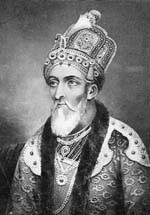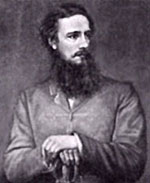The Great Revolt Of 1857
 |
| Bahadur Shah II |
 |
| Nicholson |
The leadership at Delhi was nominally in the hands of Bahadur Shah, but the real control was exercised by General Bakht Khan. On the side of the British the combined effort of Nicholson, Wilson, Baird Smith and Neville Chamberlain enabled the recapture Delhi by September 1857. In Delhi, Emperor Bahadur Shah II was arrested and deported to Rangoon, where he remained in exile till he died in 1862.
Information related to the search:
delhi, india, history, shah, bahadur, revolt, sepoys, nicholson, rebellious, hands, emperor, mutineers, general, british, meerut, rebellion, officer, prevent